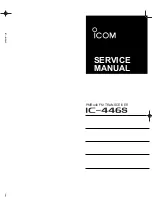
AMPLIFIER BOARD
TABLE OF CONTENTS
Class-D Amplifier circuit description ................................................. 8-1
Exploded view + mechanical parts ................................................... 8-2
Amplifier circuit .................................................................................. 8-3
Clock Generator & connector - circuit ............................................... 8-4
Bottom view ....................................................................................... 8-5
Top view ............................................................................................. 8-6
Bottom view Part A ............................................................................ 8-7
Bottom view Part B ............................................................................ 8-8
Top view Part C ................................................................................. 8-9
Top view Part D ............................................................................... 8-10
Electrical parts list - Amplifier board ............................................... 8-11
8-1
8-1
6-channel class-D amplifier
Basic operation of a class-D amplifier
Basically, the output stage of a class-D amplifier outputs a continuous square wave swinging between positive and negative power supplies
with a fixed frequency (“clock” frequency) far beyond the audible range. The duty cycle of this square wave is modulated with the audio signal.
The output is followed by a low-pass filter which eliminates the clock frequency and allows only the audio signal going to the speaker. See
simplified drawing below.
Compared to a conventional power amplifier the benefits of the Class-D amplifier are:
• higher effiency
• lower power dissipation
• smaller heatsink required
• smaller mains transformer required
The main disadvantage of this concept is:
• The amplifier is operating with a high-frequency square wave at high amplitude and currents. This requires special precautions to prevent
excessive electromagnetic ratiation (EMC).
















































